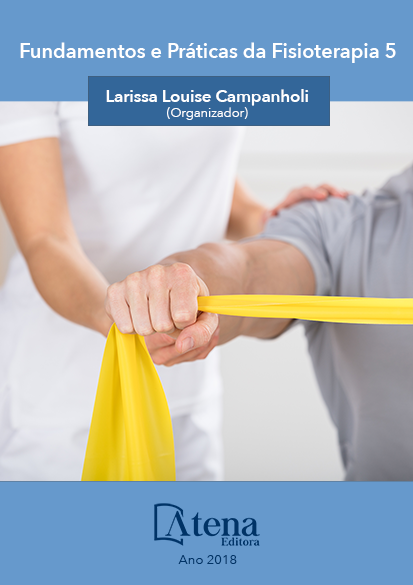
FISIOTERAPIA NO CONTEXTO HOSPITALAR DE UM PACIENTE PEDIÁTRICO COM NASOANGIOFIBROMA JUVENIL: RELATO DE CASO
Objetivo: Descrever os efeitos
da intervenção fisioterapêutica num paciente
diagnosticado com tumor raro durante o período
de internação hospitalar. Método: Relato de
caso com análise das condutas fisioterapêuticas
realizadas com um paciente do sexo masculino,
17 anos, diagnosticado com Nasoangiofibroma
Juvenil internado em um hospital de referência.
Durante a internação hospitalar o paciente foi
assistido pela fisioterapia em todo o período pré e
pós cirúrgico. No pré-operatório os atendimentos
consistiram na realização de manobras manuais
desobstrutivas, cinesioterapia respiratória, além
de exercícios ativos de membros superiores e
inferiores conforme tolerância do paciente. No
pós-operatório as condutas foram intensificadas
com objetivo de ganho de funcionalidade e
independência. Após aproximadamente dois
meses de internação, ressecção cirúrgica e
atuação da equipe multidisciplinar, o paciente
recebeu alta hospitalar com retorno gradativo
às atividades de vida diária com funcionalidade
preservada e independência total. Conclusão:
A intervenção fisioterapêutica foi fundamental
para conforto do paciente, tanto para as questões
respiratórias, evidenciadas pela localização do
tumor, quanto para evitar o declínio funcional
durante a internação
FISIOTERAPIA NO CONTEXTO HOSPITALAR DE UM PACIENTE PEDIÁTRICO COM NASOANGIOFIBROMA JUVENIL: RELATO DE CASO
-
DOI: atena
-
Palavras-chave: fisioterapia, hospitalização, oncologia, pediatria, nasofaringe.
-
Keywords: physiotherapy, hospitalization, oncology, pediatrics, nasopharynx
-
Abstract:
Objective: To describe the effects
of physical therapy intervention on a patient
diagnosed with a rare tumor during the hospital
stay. Method: Case report with analysis of the
physiotherapeutic conducts performed with
a male patient, 17 years old, diagnosed with
juvenile nasoangiofibroma admitted to a referral
hospital. During the hospital stay the patient
was assisted by physical therapy throughout
the pre and post surgical period. In the
preoperative period the attendance consisted of
performing manual unobstructive maneuvers,
respiratory kinesiotherapy, as well as active
exercises of upper and lower limbs according
to patient tolerance. Postoperatively, the ducts
were intensified with the objective of gaining functionality and independence. After
approximately two months of hospitalization, surgical resection and performance of
the multidisciplinary team, the patient was discharged with a gradual return to activities
of daily living with preserved functionality and total independence. Conclusion: The
physiotherapeutic intervention was fundamental for patient comfort, both for respiratory
issues, evidenced by the location of the tumor, and to avoid functional decline during
hospitalization.
-
Número de páginas: 15
- Luísa Gabellieri Hintz
- Giana Berleze Penna
- Luciane Dalcanale Moussalle


